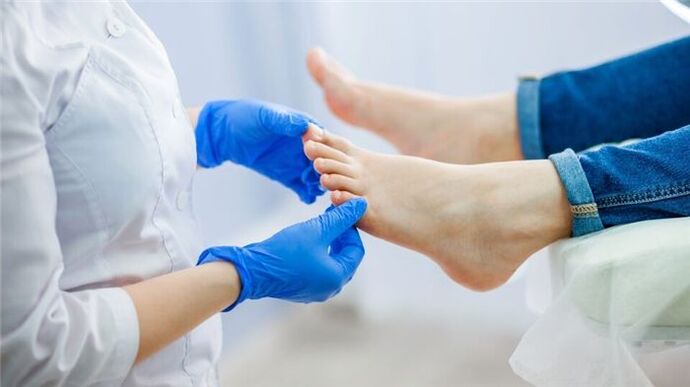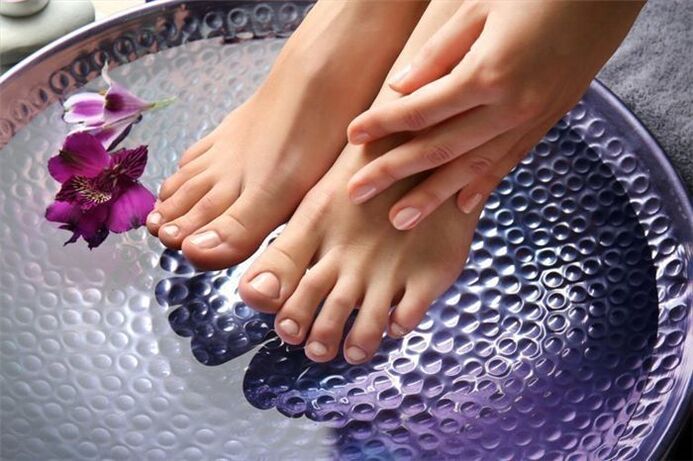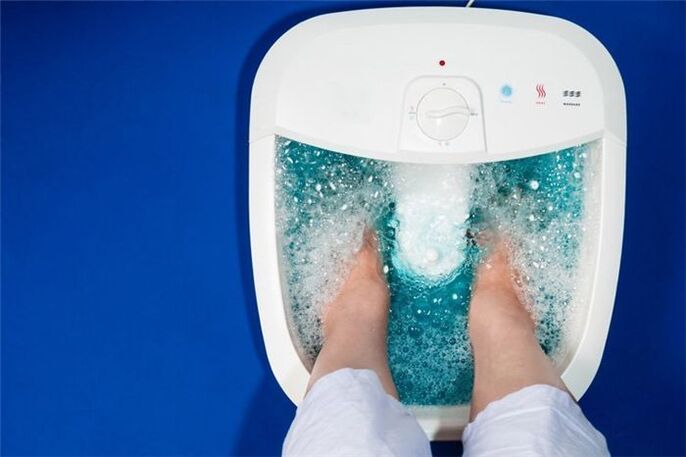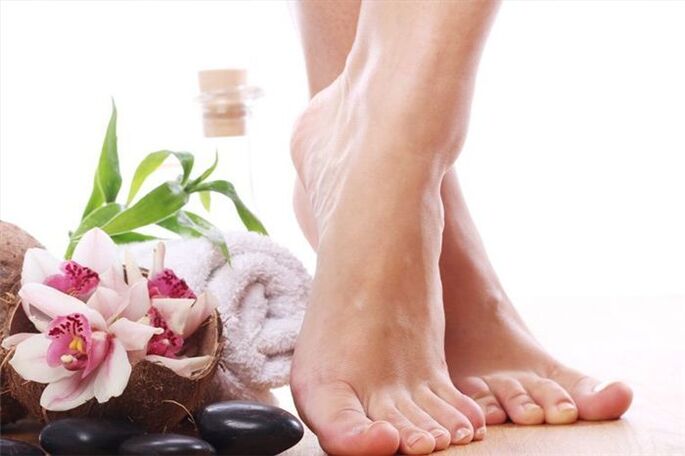Fungal infection of the nails (onychomycosis) requires long-term and complex treatment. Antifungal drugs in broad-spectrum tablets effectively fight pathogenic microorganisms, eliminate symptoms of the disease and improve the condition of the nails.
Classification of antifungal tablets
Tablet medicines with antifungal effects vary depending on their structure and mechanism of action.They are divided into varieties:
Polyenesrapidly destroy fungal spores by disrupting their membrane integrity. They are well tolerated by the body and have no negative effects on the liver and digestive system.
To treat a fungal infection in the initial stages, external medications are used - solution, varnish or cream, hydrogen peroxide.
It is recommended to treat the fungus with tablets if ointments, creams, oils, sprays and other topical agents have not brought results.
Effective tablets against nail fungus
The pharmacological market offers a wide range of antifungal drugs in tablet form, which differ in the main active ingredient, manufacturer and price.
Active substance:
- Terbinafine hydrochloride
- Fluconazole
- Terbinafine
- Ketoconazole
- Itraconazole
- Griseofulvin
- Itraconazole
- Ketoconazole
- Terbinafine
- Natamycin
When choosing a medicine, you need to consider the type of fungal infection and the severity of the disease. Before starting therapy, it is necessary to correctly determine the type of onychomycosis, since many drugs affect only a certain group of pathogens.
A drug based on terbinafine hydrochloride
This is a tableted antifungal drug that has a pathogenic effect on pathogenic microorganisms that cause onychomycosis. Contains the active ingredient of the same name. The product helps to destroy the outer membrane of fungal pathogens, leading to their death.
Inexpensive tablets are used to treat onychomycosis, dermophytosis and ringworm.Main contraindications:
- kidney failure;
- children under 3 years old;
- period of pregnancy and breastfeeding;
- Hypersensitivity to terbinafine.
The drug can cause side effects – headaches, nausea, loss of appetite, upset stools, painful abdominal cramps.
With prolonged use, you need to systematically monitor liver function and avoid consuming alcoholic beverages.
The recommended dosage is 1 tablet per day. The duration of the treatment is determined individually. In the advanced stage of onychomycosis, use is allowed for 8-12 weeks.
A drug from the group of triazole antifungals
An effective drug with antifungal activity, produced in various pharmacological forms. The drug is used to eliminate fungal infections, as well as for prevention. Its use in liver diseases is permitted, but under medical supervision.
Main contraindications for use:
- kidney disease;
- Period of exacerbation of psoriasis and other dermatological diseases of an inflammatory nature;
- Pregnancy;
- individual intolerance to the active ingredients of fluconazole.
To treat nail fungus, the drug is taken once a day for 4 weeks. The dosage is then reduced to 1 tablet every 7 days. The product has a cumulative effect - after 4-5 days of use, a high concentration of the substance accumulates in the stratum corneum of the nail plate.
To prevent remission, the drug must be taken until the healthy nail plate grows completely.
In rare cases, the drug causes side effects such as nausea, stomach pain, itching and burning in the areas affected by the fungus, as well as various allergic reactions.
A drug based on terbinafine hydrochloride 10 mg
This is an antifungal agent that is highly effective against many types of fungal microorganisms. The active ingredient terbinafine inhibits the biosynthesis of sterols in fungal cells, which leads to the rapid death of infectious pathogens.
The drug is well tolerated by the body and has a minimal number of contraindications to use - severe forms of kidney disease, increased sensitivity to the active ingredients included in its composition. Approved for use in liver diseases.
For adults, it is recommended to take 1 tablet per day for 3-6 weeks. To cure advanced stages of toenail fungus, the duration of therapy is extended to 10-12 weeks.
In extremely rare cases, headaches, nausea, bloating, allergic symptoms and skin rashes occur.
A drug based on ketoconazole
The active ingredient ketoconazole is one of the most powerful antifungals. It is used for systemic fungal infections in severe, advanced stages.
Its use is recommended for total damage to the nail plates, which also affects surrounding soft tissues. Also, the drug is prescribed if antifungal drugs for topical use have not brought positive results.
Approved for use in liver disease, but best under medical supervision and regular liver examinations.
The drug should not be used to treat nail fungus in children under 12 years of age, pregnant and breastfeeding women, as well as in cases of individual intolerance.
Side effects: attacks of nausea and vomiting, flatulence and abdominal pain, conjunctivitis, allergic rashes, apathy, nervousness, in men - temporary deterioration in libido.
The recommended dosage for onychomycosis is 1-2 tablets per day, depending on the severity of the fungal infection. The duration of therapy is 4-5 weeks.
Preparation based on itraconalose 0. 1 g
The active ingredient itraconazal is used in inexpensive medications against toenail fungus. It inhibits ergosterol in the cell membranes of pathogenic microorganisms and has a harmful effect on almost all known nail fungal pathogens. Intraconazole tablets are used to treat fungal infections, regardless of the location and extent of the lesions.
The medicine should not be used in case of exacerbation of kidney diseases, as well as in case of hypersensitivity to the active ingredients included in its composition. In liver diseases, it is used during the remission phase.
A cheap and effective drug can cause negative reactions – the development of dysbiosis, flatulence, stomach pain, headache and dizziness. In rare cases, the medication may cause swelling of soft tissues.
To treat onychomycosis of nails, it is recommended to take 1 tablet in the morning and evening for 10-12 weeks. After that, the drug is taken in weekly courses with a break of 2-3 weeks.
A drug based on itraconalose
The antifungal effect of the drug is achieved by the active ingredient itraconazole. For fungal infections of the fingernails and toenails, the drug is taken 2 tablets once a day or divided into two doses. The treatment period is 8 to 12 weeks.
At home it can also be used for weekly therapy. After taking the tablets for 7 days, take a break for 3 weeks, after which treatment is continued. For fungal infections of the nail plates, at least 3 courses are required. The tablets are taken 2 times in the morning and in the evening.
The drug is well tolerated by the body. In rare cases, side effects may occur – nausea, constipation, allergic rashes, headaches, loss of appetite, nervousness, fatigue, loss of strength. Caution should be exercised in case of exacerbation of liver disease.
Itraconazole-based drug 100 mg
The antifungal contains the active ingredient itraconazole 100 mg, which has a destructive effect on fungal membranes and leads to the death of pathogenic microorganisms. It is a broad-spectrum drug, which is why it is prescribed for advanced stages of onychomycosis.
The drug should not be taken if you have heart failure or low levels of sucrose in the blood. If you have fructose intolerance, the medicine should be taken with extreme caution.
For fungal nail infections, it is recommended to take 1 tablet each morning and evening, 20 to 30 minutes after meals. The average treatment duration is 2-3 weeks. The reception is stopped only when healthy nail plates grow back.
Taking the drug may be accompanied by side effects – nausea, vomiting, upset stools, loss of appetite, headache, dizziness, peripheral neuropathy, rash. In some cases, women may experience menstrual irregularities. Caution should be exercised in case of exacerbation of liver disease.
Drug based on ketoconazole 200 mg
This is a broad-spectrum drug with antifungal and antibacterial effects. The main active ingredient of the product is ketoconazole, which is highly effective against dermatophytes, eumycetes, dimorphic and yeast pathogens.
To treat nail fungal diseases, it is recommended to take 1-2 tablets throughout the day. The exact dosage of the medication is determined by the doctor depending on the severity of the disease. The average duration of the therapy course is 12-15 weeks.
The medicine should not be taken during pregnancy, breastfeeding or to treat children under 3 years of age.
Caution should be exercised in case of exacerbation of liver disease. Tablets can cause negative reactions from internal organs – upset stools, nausea, vomiting, skin rashes, drowsiness, loss of strength.
Taking the drug in men is in some cases accompanied by a decrease in sexual activity and a deterioration in erectile function, which negatively affects intimate life.
Short Summary
For fungal infections of the nail plates of various origins, effective and inexpensive antifungal drugs in tablet form are used. They are prescribed when ointments, gels and other products for external use have not brought the desired result.
Broad-spectrum tablets are effective against most pathogenic microorganisms and fungal pathogens. The treatment of mycoses is lengthy and complex; The medication must be taken until healthy nail plates grow back.
Effective antifungals
Are your nails turning yellow and peeling, do you have dandruff or do you suffer from thrush? All of these are symptoms of a fungal infection, which is why treatment is essential. Let's talk to experts about what effective antifungal drugs exist and how to choose them correctly

Mycoses or fungal infections are a very common disease. Fungi usually affect the skin, mucous membranes and nails, but can also affect internal organs. Fortunately, effective antifungals can combat almost any disease. The main thing is to choose the right remedy.
How to choose antifungal drugs
A trivial but correct answer is to see a doctor who will make a diagnosis and prescribe medication. It is very easy to make a mistake in self-diagnosis because fungal infections are similar in symptoms to many other diseases. For example, the same "thrush" may turn out to be bacterial vaginosis, which requires completely different therapy. In addition, we must remember that long-term, improper treatment worsens the course of the disease.

Fungal nail infections are the easiest to diagnose, but errors are possible here too. If you pamper yourself, remember that ointments, gels and creams do not work on the nails, only liquids and varnishes do. An important point that many do not take into account is that before using the drug, the affected part of the nail must be removed. If this does not happen, the medicine simply does not reach the lesion. If the matrix (the area of active nail growth) is damaged, therapy with tablets and injections, as well as local remedies is required 4.
How to apply anti-fungal varnish correctly
An important feature when using antifungal agents is that the nail plate should be as clean as possible. To do this, fungal plaque is carefully removed with nail scissors. The nails themselves should be cut short, washed with laundry soap and treated with an alcohol solution.
The varnish is applied to completely dry nails using a special brush included in the product set. Avoid contact with surrounding skin. In this case it is imperative to follow the instructions. To enhance the effect of the varnish, it is recommended to wear light cotton socks throughout the treatment, changing them daily, and roomy shoes that do not squeeze your toes.
The most effective remedies for toenail fungus
Nail fungus requires treatment at the first signs of illness. The sooner the problem is diagnosed and a course is started, the greater the chances of getting rid of mycosis successfully and with minimal consequences. Even among the most effective remedies for nail fungus, you need to choose the most suitable option.
How to choose an effective remedy for nail fungus
Treatment of mycoses is a long process. Sometimes a dermatologist offers several options for drugs from the same pharmacological group. Considering the price of modern antimycotics, treatment is often associated with considerable costs.
Therefore, in some cases it may be advisable, after consulting a doctor, to choose a cheaper analogue of the drug with the same active ingredient or similar pharmacological properties. In order not to make a mistake when choosing, it is worth considering patient reviews about the most popular drugs.
Pharmacy medications for nail fungus are divided according to the method of use:
- external preparations for local treatment of affected surfaces (sprays, ointments, creams, varnishes);
- Internal preparations have a systemic antifungal effect on the entire body (capsules, tablets).
There are many pathogenic species among fungi, and the exact cause of the disease is determined by the doctor after an analysis. In advanced cases, the analysis can detect several pathogenic fungi, and each of them requires its own drug.
How to determine whether your nails are infected with fungus
Nail fungus is characterized by inflammation, pain and swelling of the finger, as well as yellowing and brittleness of the nail itself. The nails appear deformed with inflamed skin and a periungual ridge. There is delamination and brittleness of the nail, the fingers appear unkempt. In advanced cases, the tissue begins to die and expose the nail bed.
What groups of antifungals against nail fungus are there?
Among the mycoses there are stubborn diseases with a tendency to relapse. If you violate the treatment regimen and stop the course as soon as the visible symptoms of the disease disappear, the lesion will return in an even more complex form and it will be much more difficult to get rid of it.
When treating with any drug, even the most expensive one, you cannot get by with a single pill; nail fungus requires time and patience.

Self-medication is not recommended; a dermatologist should be consulted at the first signs of nail fungus.
Azole group
Antimycotics based on the active ingredients imidazoles and triazoles have a double effect:
- fungicidal – destroys the cells of the pathogen;
- fungistatic – destroys fungal spores and prevents them from multiplying.
These products have a good effect against yeast, mold and yeast-like fungi. Medicines of the azole group are available in various forms: for oral administration – tablets and capsules, external forms – ointments, creams, varnishes, solutions.
Capsules and tablets are taken as directed by the attending physician according to the recommended regimen. As a rule, this is a continuous course, but another treatment regimen is possible, which is designed to last several months (up to six months) while healthy nails grow. Ointments and creams are rubbed into the affected nail plates several times a day.

Before treatment, you must first trim your nails at the root and prepare a soda-soap bath for your feet.
Allylamine group
Drugs based on allylamines quickly eliminate the unpleasant symptoms of a nail fungal infection: burning and itching. The active ingredient is effective against fungi of the genus Candida, dermatophytes and molds; the pathogen is killed by destroying the membrane of their cells.
Creams and sprays are applied to the affected nails 1-2 times a day after hygiene measures: cutting nails, soap bath, thorough drying.
The use of medications from the allylamine group makes sense for local treatment if the pathogen affects less than half of the surface of the nail plates and the matrix is not attacked. Otherwise, systemic tablets are indicated to destroy the infection.

The medicine must be rubbed into the surface, touching the surrounding skin.
Morpholine group
Medicines from the morpholine group contain amorolfine as the main active ingredient. The most convenient form of the drug from this group is considered to be varnish.

The varnish is applied to the affected nails and does not wear off for 1-2 weeks; A new layer is regularly applied on top of the old one.
Before coating, the affected surface of the nails must be steamed, dried well and degreased. When treating nails with anti-fungal varnish, observe strict hygiene measures: use only a disposable file, disinfect the spatula.
Preparations from the morpholine group show good effectiveness against various types of fungi, penetrate the nail plate and begin to work quickly. The treatment period can take 9-12 months until the nails are completely restored.



























